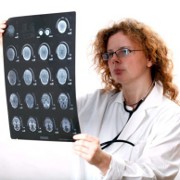 Photo: Getty Images
Photo: Getty Images
As of 2007 in the United States, about 5.4 million children between the ages of 4 and 17 have been diagnosed with attention deficit hyperactivity disorder, or ADHD, according to the Centers for Disease Control and Prevention. Children with this disorder can have one of three subtypes: predominantly hyperactive-impulsive, in which they have six or more hyperactive or impulsive symptoms and less than six inattention symptoms; predominantly inattentive, in which they have six or more inattention symptoms and less than six hyperactive or impulsive symptoms; or combined, in which they have six or more symptoms of both symptom groups. While children of both genders can have the disorder, ADHD is more common among boys. The Centers of Disease Control and Prevention noted that 13.2 percent of boys have been diagnosed, compared to 5.6 percent of girls.
Children with ADHD who have inattention symptoms may have problems processing information as quickly as their peers, may become easily distracted, have difficulty with organization, and may appear to not listen. Hyperactivity symptoms include fidgeting, being constantly in motion, and having trouble staying still. Children who have impulsivity symptoms may be impatient and interrupt other people’s activities. The exact cause of these symptoms is not known, but researchers have looked at differences in the brains of ADHD patients.
A 2007 study funded by the National Institute of Mental Health found that children with ADHD had delays in development in certain areas of their brain. One area the researchers found a delay in development was the cortex, which is involved in planning, thinking and attention. The researchers found that in the 223 participants with ADHD that they scanned, about half of the sites of the cortex reached their peak thickness on average at age 10.5. In comparison, in the brains of the 223 controls, those same sites reached peak thickness at age 7.5 (http://www.nimh.nih.gov/videos/press/ADHDDelayRtSideWeb.mp4). The video from the National Institute of Mental Health demonstrated the difference.
In a new study conducted at the Kennedy Krieger Institute, researchers found structural differences in the brains of children with ADHD. The children in the study were between ages 4 years and 0 months, to 5 years and 11 months and they did not have any other psychiatric disorder, neurological disorder or intellectual disability. Twenty-six children were included, with 13 in the ADHD group and 13 in the control group, who underwent MRIs. The brain scans revealed structural differences in the caudate nucleus, an area of the brain involved in cognition. The researchers found that compared to children without ADHD symptoms, children with ADHD had a significantly smaller caudate nucleus volume; this volume was also correlated with hyperactive and impulsive symptoms as rated by the children’s parents.
References:
Centers for Disease Control and Prevention. Attention-Deficit/Hyperactivity Disorder (ADHD): Data and Statistics. 2010. Web. 17 August 2011.
http://www.cdc.gov/ncbddd/adhd/data.html
National Institute of Mental Health. Attention Deficit Hyperactivity Disorder (ADHD). National Institutes of Health, 2011. Web. 17 August 2011.
http://www.nimh.nih.gov/health/publications/attention-deficit-hyperactivity-disorder/complete-index.shtml
National Institute of Mental Health. Brain Matures a Few Years Late in ADHD, But Follows Normal Pattern. National Institutes of Health, 2007. Web. 17 August 2011.
http://www.nimh.nih.gov/science-news/2007/brain-matures-a-few-years-late-in-adhd-but-follows-normal-pattern.shtml
Mahone, E.M. et al. A Preliminary Neuroimaging Study of Preschool Children with ADHD. The Clinical Neuropsychologist, 2011. Web. 17 August 2011.
http://www.tandfonline.com/doi/abs/10.1080/13854046.2011.580784
Press Release. Brain Imaging Study of Preschoolers with ADHD Detects Brain Differences Linked to Symptoms. Kennedy Krieger Institute, 2011. Web. 17 August 2011.
http://www.kennedykrieger.org/kki_news.jsp?pid=9709
Reviewed August 17, 2011
by Michele Blacksberg R.N.
Edited by Jody Smith






Add a CommentComments
There are no comments yet. Be the first one and get the conversation started!